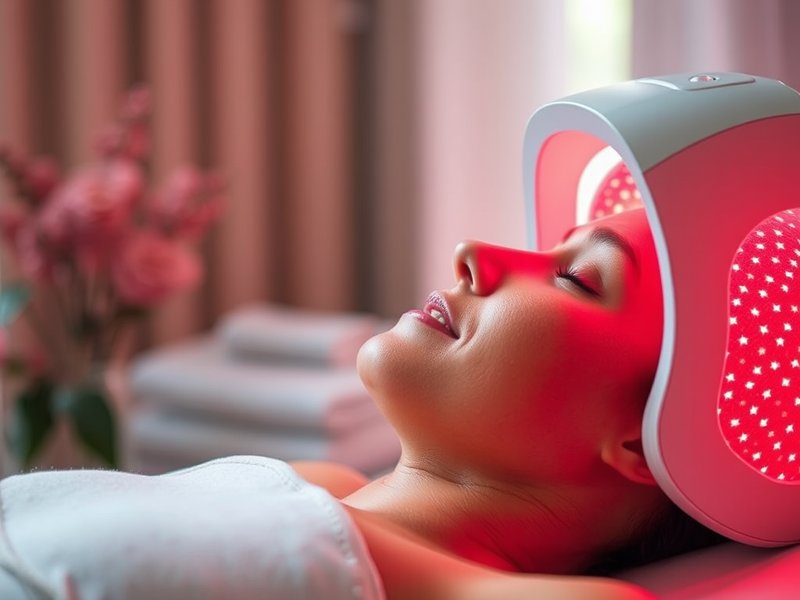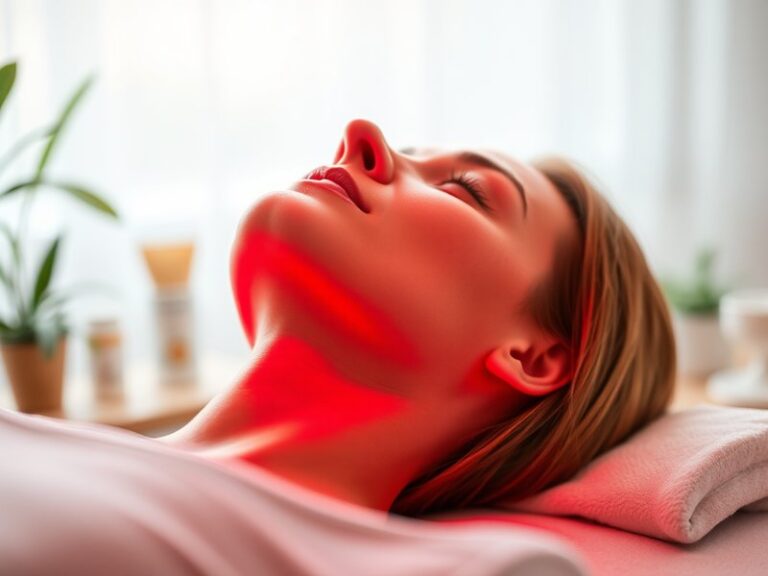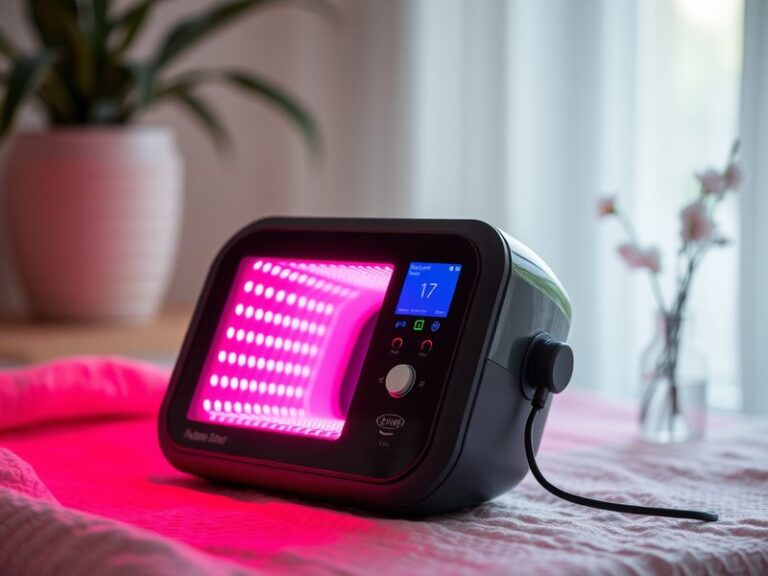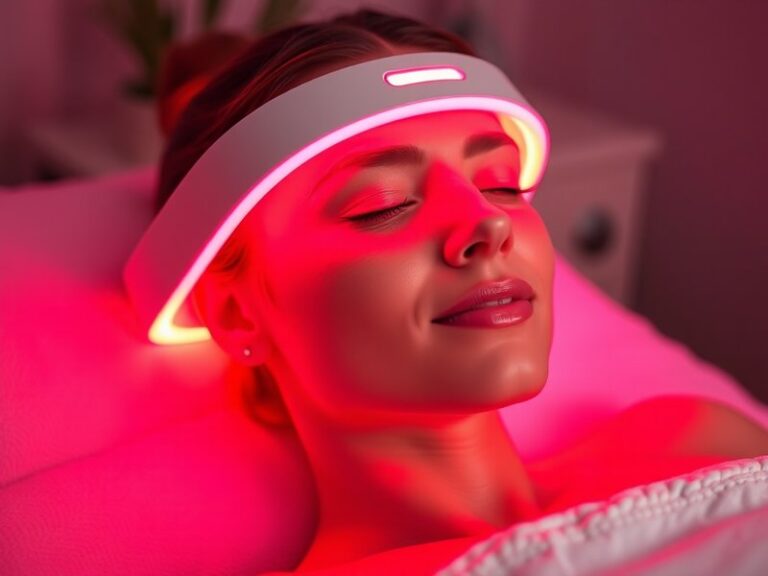Can Red Light Therapy Help Shingles?
Can Red Light Therapy Help Shingles?
Can red light therapy provide relief for those suffering from shingles?
This article explores the potential benefits of red light therapy in managing shingles symptoms, which include pain, inflammation, and rash. We will cover what red light therapy entails, how it may alleviate shingles-related discomfort, considerations to keep in mind before trying this treatment, and alternatives that exist for those seeking relief.
Key Takeaways
- Red light therapy may help reduce pain and inflammation associated with shingles.
- This therapy promotes faster healing of the skin and underlying tissues.
- Consult with a healthcare professional before starting any new treatments.
What is Red Light Therapy?
Red light therapy (RLT) is a non-invasive treatment that uses low-level wavelengths of red light to penetrate the skin and stimulate cellular processes. It is often utilized in dermatology, physical therapy, and pain management due to its potential benefits in promoting healing, reducing inflammation, and alleviating pain.
The therapy typically involves the use of light-emitting diode (LED) devices or laser systems that emit red and near-infrared light, which are thought to enhance mitochondrial function in cells. This, in turn, boosts energy production and accelerates repair processes within the body.
Mechanism of Action
Red light therapy works by enhancing cellular energy production through a process called photobiomodulation. This process helps reduce oxidative stress, promotes circulation, and encourages tissue repair, thereby addressing symptoms related to shingles.
Current Applications
RLT is currently being explored and applied for a variety of conditions, including:
– Acne and other inflammatory skin conditions.
– Wound healing.
– Muscle and joint pain reduction.
What are the Benefits of Red Light Therapy?
Red light therapy has shown promise in various fields, particularly in helping those suffering from conditions like shingles. Here, we outline the key benefits that may be particularly relevant.
Pain Relief
Many patients suffering from shingles experience nerve pain known as postherpetic neuralgia. Research suggests that red light therapy may help decrease pain intensity by modulating inflammatory responses and promoting nerve regeneration.
Reduced Inflammation
Shingles can lead to significant inflammation around the affected area. RLT has anti-inflammatory properties, which can help alleviate swelling and redness associated with shingles rash, enabling a quicker recovery.
Improved Healing
RLT may accelerate the healing process of the skin by promoting collagen production and cellular repair. Since shingles can cause scarring and prolonged skin sensitivity, using RLT may help minimize these effects.
Enhanced Immune Response
Light therapy might also facilitate immune responses, supporting the body’s ability to combat the virus responsible for shingles, resulting in potentially quicker recovery times.
Is it Possible to Use Red Light Therapy for Shingles?
Yes, red light therapy can be utilized for shingles management. However, it’s essential to approach this treatment with a clear understanding of its nuances, efficacy, and ideal practices.
Learn everything about Red light therapy mask benefits.
What are the Advantages of Using Red Light Therapy?
The advantages of using red light therapy for shingles are numerous, including:
Non-Invasive Treatment
RLT is a safe, non-invasive option that typically has few side effects, making it suitable for many individuals, including those who may not tolerate other forms of treatment.
Complementary Therapy
RLT can be used alongside traditional treatments for shingles, such as antiviral medications, enhancing overall treatment efficacy and potentially leading to improved patient outcomes.
Convenience and Accessibility
Many devices for red light therapy can be used at home, making it a convenient option for ongoing treatment without the need to frequently visit a clinic.
Promotes Self-Care
Using RLT encourages individuals to take an active role in managing their health and wellness, which can lead to a more comprehensive approach to recovery.
What are the Disadvantages of Using Red Light Therapy?
While red light therapy is generally considered safe and effective, there are some challenges and disadvantages to consider.
Limited Research
While studies suggest benefits, more extensive research is needed to fully validate RLT’s efficacy specifically for shingles. Understanding its effectiveness depends on the quality and consistency of the clinical evidence available.
Not a Replacement for Medical Treatment
RLT should not replace conventional shingles treatments such as antiviral drugs or pain management strategies. It is best used as an adjunct therapy to support overall recovery.
Varied Results
Not everyone may respond equally to red light therapy. Some individuals may derive significant benefits, while others may not experience the desired results.
What are the Things to Consider Before Using Red Light Therapy?
Before starting red light therapy for shingles, it is crucial to consider the following factors to ensure the best and safest practice.
Consult Healthcare Providers
Always consult with a healthcare professional before beginning any new treatment to discuss the potential benefits and risks tailored to your specific condition.
Device Selection
Choosing the right device is essential. Ensure that you use a high-quality RLT device that emits appropriate wavelengths (typically between 600-1000 nm) for maximum effectiveness.
Treatment Frequency and Duration
Understanding the recommended frequency and duration of treatments is key to achieving the best outcomes. Following guidelines established through research can help optimize the benefits.
What are the Alternatives to Red Light Therapy?
In addition to red light therapy, there are several alternative treatments available for managing shingles symptoms.
Antiviral Medications
Antivirals like acyclovir and valacyclovir are standard treatments that can reduce the severity and duration of shingles outbreaks when taken early.
Pain Relievers
Over-the-counter pain medications like ibuprofen or acetaminophen can help manage discomfort and inflammation associated with shingles.
Topical Treatments
Certain topical creams and patches containing capsaicin or lidocaine can provide localized pain relief for shingles pain.
Complementary Therapies
Acupuncture, massage therapy, and other holistic approaches may support pain relief and relaxation during recovery.
Conclusion: Is it Recommended to Use Red Light Therapy?
Red light therapy shows promise as a complementary treatment for shingles, particularly regarding pain relief, inflammation reduction, and skin healing. While it may not replace established medical treatments, it could serve as a helpful adjunct therapy for many individuals. As always, consulting with a healthcare provider can guide the best approach tailored to your needs.
Frequently Asked Questions
Can I perform red light therapy at home for shingles?
Yes, you can use at-home red light therapy devices, but it’s essential to select a reliable and appropriately designed device.
How long does it take to see results from red light therapy for shingles?
Results can vary, but some individuals may start to notice improvements within a few sessions, whereas others may require more consistent treatments over time.
Are there any side effects associated with red light therapy?
Generally considered safe, most side effects are mild, such as temporary redness or warmth in the treated area. However, prolonged exposure may lead to skin irritation.
How often should I use red light therapy for shingles?
Depending on the device and individual circumstances, users typically benefit from 3 to 5 sessions a week, each lasting between 10 to 20 minutes.
Can I use red light therapy while on antiviral medication for shingles?
Yes, red light therapy is usually safe to use alongside antiviral medications, but always discuss with your healthcare provider for personalized advice.
Find out in Pre-therapy applications for red light






